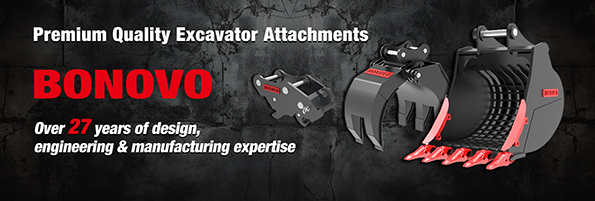There are skills and shortcuts to do anything. Do you know several important skills for repairing small excavators? How to judge the failure of small excavators, there are several factors that need to be understood. Small excavator repair technicians all have certain experience, and what is said here is: one look, two ask, three listen, four touch, five test.
Five major factors for on-site small excavator repair:
It is to check the working condition of the hydraulic system by eye.
1. Whether the amount of oil in the oil tank meets the requirements, whether there are bubbles and discoloration (the noise, vibration and crawling of the machine are often related to a large number of bubbles in the oil); 2. The oil leakage of the sealing part and the street number of the pipe; the change of the indication value of the pressure gauge and the oil temperature gauge during operation; whether there is damage to the faulty part, the connection gradually falls off, and the fixing parts are loose.
3. When the hydraulic oil leaks, after eliminating the lack or uneven torque of the fastening bolts, before replacing the oil seal that may have been severely worn or damaged, you should also check whether its pressure exceeds the limit.
4. When installing the oil seal, check the type and quality of the oil seal and install it accurately.
Small excavator
Two questions
It is to ask the operator about the basic condition of the faulty machine.
1. First, understand what abnormal phenomena the machine has;
2. Whether there are any illegal operations and repair and maintenance during use; 3. Whether the hydraulic oil trademark is correct and the replacement status;
4. The opportunity for the fault to occur, whether it occurs at the beginning of the operation or after a period of operation, etc.; 5. Is the fault sudden or gradual;
After obtaining this information, the characteristics of the fault in the hydraulic system can be basically confirmed. Generally speaking, sudden faults are mostly caused by dirty hydraulic oil or broken springs that cause the valve to close loosely; gradual faults are mostly caused by severe wear of components or aging of rubber seals and pipes.
Three Listening
It is to use your ears to check whether there are abnormal sounds in the hydraulic system.
The normal machine operation movement has a certain rhythm and rhythm, and remains stable. Therefore, understand and master these rules, and keep steady.
1. Understand and master these rules, you can accurately diagnose whether the hydraulic system is working properly; 2. The "chirping" or "clucking" sound of the hydraulic pump is often caused by damage to the pump shaft or bearing; 3. The "chi chi" sound of the reversing valve is due to insufficient valve stem opening; the heavy "clicking" sound may be the sound of overload valve overload; 4. If it is cavitation sound, it may be that the oil filter is blocked by dirt, the hydraulic pump suction pipe is loose, or the oil level in the oil tank is too low; 5. According to the changes in rhythm and melody, as well as the components where abnormal sounds occur, the faulty components can be identified, and the location and degree of damage of the fault can be identified. For example, a high-pitched sharp whistling sound usually means that air is sucked in; Four Touch
It is to use the sensitive finger touch to check whether the pipelines or components of the hydraulic system have vibration, impact, and abnormal oil temperature rise.
1. If you touch the pump housing or hydraulic parts with your hands, you can tell whether the hydraulic system has abnormal temperature rise according to the degree of coldness and heat, and find out the cause and location of the temperature rise.
2. If the pump housing is overheated, it means that the pump has severe internal leakage or air has been sucked in. If you feel abnormal vibration, it may be due to poor balance of the reversing parts, loose fastening screws, or gas in the system.
Small excavator
Five tests
It is to operate the execution components of the hydraulic system of the machine and determine the location and cause of the fault from its working conditions.
1. Comprehensive test. According to the design function of the hydraulic system, test one by one to confirm whether the fault is in a partial area or in the whole area. If the whole machine fails or is weak, you should first check whether the pilot operating pressure is normal, whether the clutch (coupling) is slipping (loose), whether the engine power is sufficient, whether the hydraulic oil volume is sufficient, and the sealing condition of the hydraulic pump inlet. If the malfunction symptom of a small excavator is only manifested as the boom automatically descending, the cause of the malfunction may be in the oil circuit of the reversing valve, overload valve or hydraulic cylinder, and has nothing to do with the hydraulic pump and the main safety valve.
2. Alternating test. When only a certain circuit or a certain function is lost in the hydraulic system, the oil circuit with the same (or related) function can be exchanged to further confirm the fault location. For example, a small excavator has two independent working circuits, each circuit has its own components. When a circuit fails, the other pump can be connected to this circuit through an alternating high-pressure oil pipe. If the fault is still on one side, it means that the fault is not on the pump.
Buy a small excavator, buy a second-hand small excavator, buy excavator parts, sell excavator parts, buy a small excavator
Choose DIG-DOG for high-quality, customizable brush cutters for skid steers with fast delivery. Contact us today to discover how our superior products can enhance your land management tasks!
for more info just visit our website at www.dig-dog.com
contact # : +86 158 6218 2088
email : sales@bonovogroup.com
Five major elements of small excavator repair
- DIG-DOG
- Counselor
- Posts: 655
- Joined: Oct 20th, '24, 22:38
- Location: China

